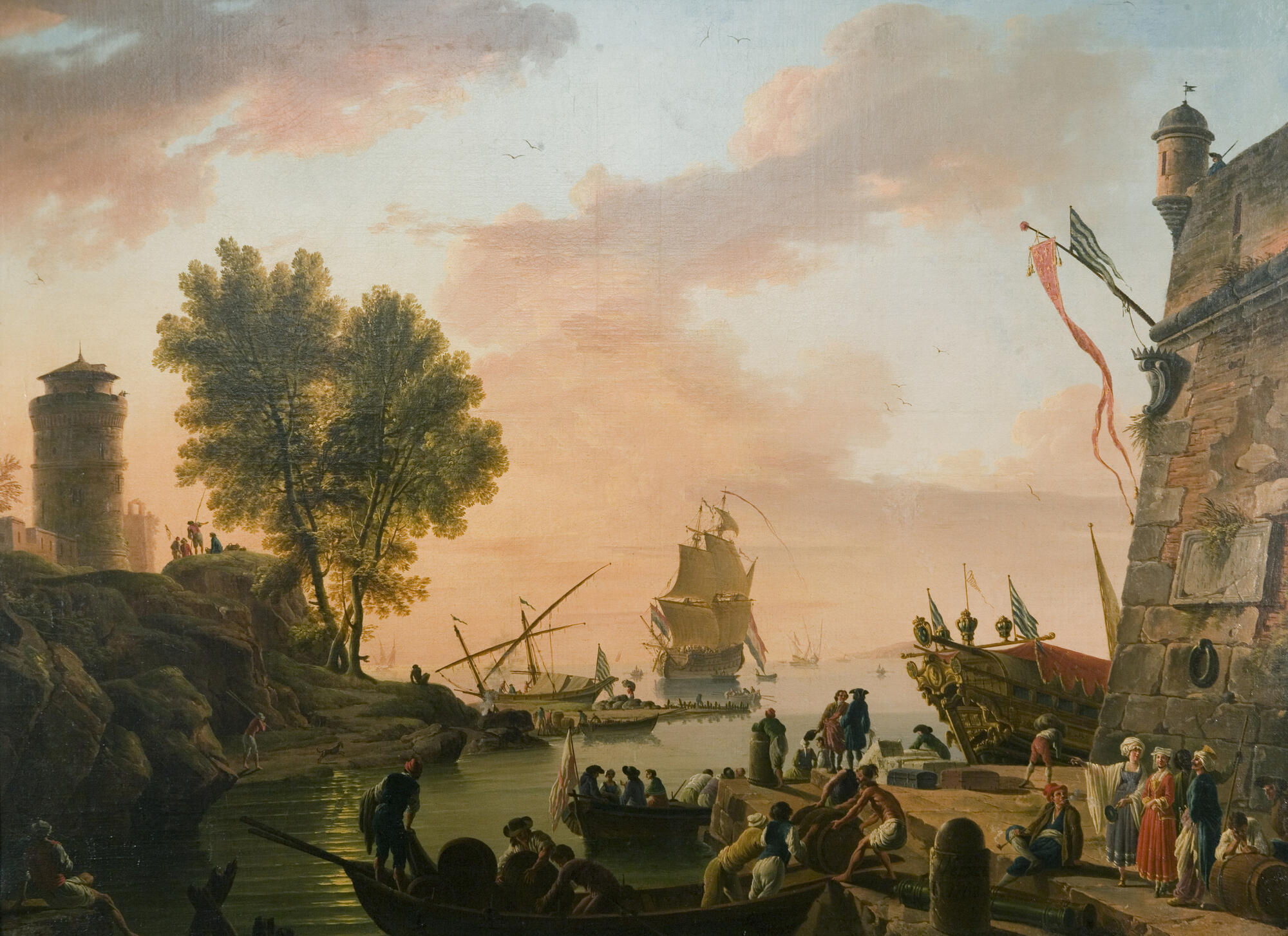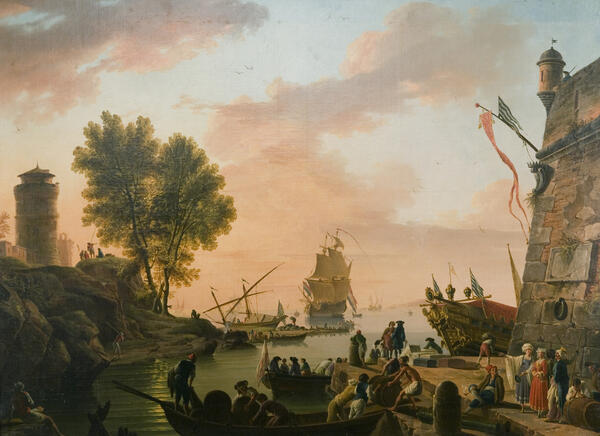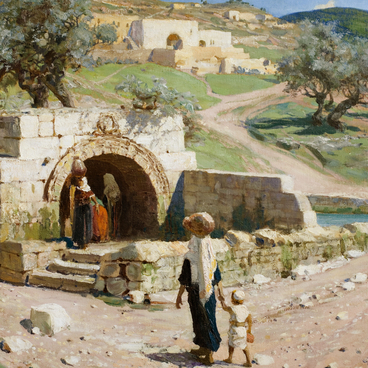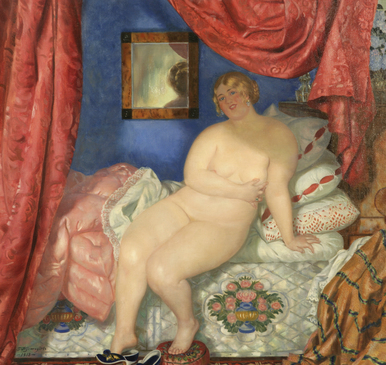Claude Vernet received the original drawing and painting skills from his father and grandfather, and then, as was customary at that time, the young artist went to study in Italy. Most of his peers from poor families had to wait several years for an academic award to pay for their studies, but Claude Vernet was luckier than others — wealthy family friends helped with the money. Thanks to his patrons, the youngster was given the opportunity to study with the greatest Italian masters of the 18th century: Pannini, Manglard, Locatelli.
The young artist painted a lot from nature, depicting riverbanks and seascapes. Claude Vernet stayed in Italy for quite a long time — 19 years. During this time, he acquired a distinctive handwriting of the master: subtle observation, the skillful transmission of light and shadow, great realism, typical of other painters of this era. His landscapes continued the top tradition of French landscape painters of the 17th century, especially Claude Lorraine. The artist preferred to depict the sea elements in all its glory — sunsets, moon nights, romantic storms, and bizarre heaps of coastal rocks.
The young artist painted a lot from nature, depicting riverbanks and seascapes. Claude Vernet stayed in Italy for quite a long time — 19 years. During this time, he acquired a distinctive handwriting of the master: subtle observation, the skillful transmission of light and shadow, great realism, typical of other painters of this era. His landscapes continued the top tradition of French landscape painters of the 17th century, especially Claude Lorraine. The artist preferred to depict the sea elements in all its glory — sunsets, moon nights, romantic storms, and bizarre heaps of coastal rocks.
Vernet’s works gained fame in France even before the artist’s return to Paris and have been hugely popular since then. In 1753, Claude Vernet received the honorary title of academician of painting and commissioned by Louis XV, King of France, created the famous series ‘Ports of France’. In his painting ‘In Port’, the artist turned to one of his favorite motifs: the image of the busy life of the port against the background of serene nature.
Russian Emperor Paul I liked the painter’s seascapes very much, and any collection of the European museum was considered incomplete if there was not at least one work by Claude Vernet. His large canvases were purchased to decorate palaces all over Europe and are now in all major European museums. When fulfilling private orders, the artist discussed all the details: size, plot, and the color of the painting, taking into account the place where it would be placed.
Until his last days, Claude Vernet worked at the Louvre on countless orders, where he died in December 1789. The phrase “To die in the Louvre, ” which for artists worldwide has the same meaning as for the actors “A real artist must die on stage, ” was said exactly about Claude Vernet.
Russian Emperor Paul I liked the painter’s seascapes very much, and any collection of the European museum was considered incomplete if there was not at least one work by Claude Vernet. His large canvases were purchased to decorate palaces all over Europe and are now in all major European museums. When fulfilling private orders, the artist discussed all the details: size, plot, and the color of the painting, taking into account the place where it would be placed.
Until his last days, Claude Vernet worked at the Louvre on countless orders, where he died in December 1789. The phrase “To die in the Louvre, ” which for artists worldwide has the same meaning as for the actors “A real artist must die on stage, ” was said exactly about Claude Vernet.



